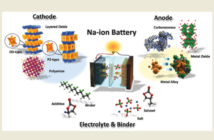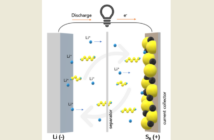There seems to be an new semiconductor that will replace the more popular silicon.
For the longest time, silicon had been the preferred semiconductor when creating circuits. It has an electrical resistance that changes with the application of mechanical stress. When under high temperatures, silicon’s electrical conductivity becomes more pronounced.
But according to an article published in Science Daily, there is a new material that may prove to be better than silicon. It is known as Carbon Nanotubes. The researchers coming from USC Viterbi School of Engineering announced that they already addressed a major issue that will finally allow this new material to be used as a semiconductor. They were able to create a hybrid circuit that is both flexible and energy-efficient through the combination of thin film transistors that are made of carbon nanotubes and other materials (IGZO – indium, gallium and zinc oxide).

The highlighted benefits of this new semiconductor over silicon is that the it will be more flexible, transparent and more economical to produce.
The team, led by electrical engineering professor Dr. Chongwu Zhou, said that they were trying to turn the Carbon Nanotubes into n-type transistors. But after failing, he and his team of graduate students decided to stop trying to turn the material into something other than a natural p-type transistor. Instead, they thought of integrating other materials that will supply the needed n-type transistors – which is what the IGZO can provide. What resulted is a complementary circuit that is more economical than those created with silicon semiconductors. The combination can effectively reduce power loss and increase efficiency too.
The IGZO thin film transistors enabled power efficiency that will help increase battery life – something that will be lost if the semiconductor is purely made out of carbon nanotubes.
The new integrated circuit can be used in OLEDs (Organic Light Emitting Diodes), RFID (radio frequency identification), sensors, digital circuits, flash memory devices and wearable electronics. This also has some promising application in the medical industry.



